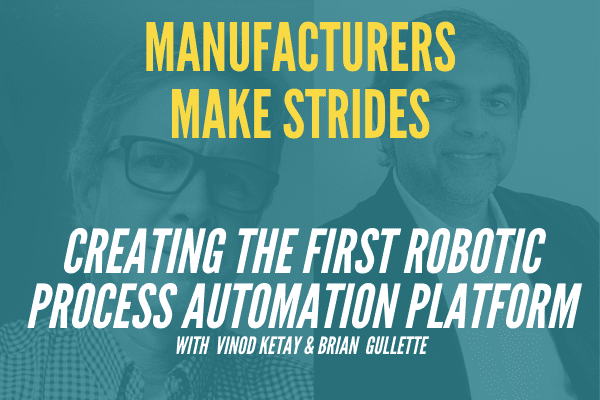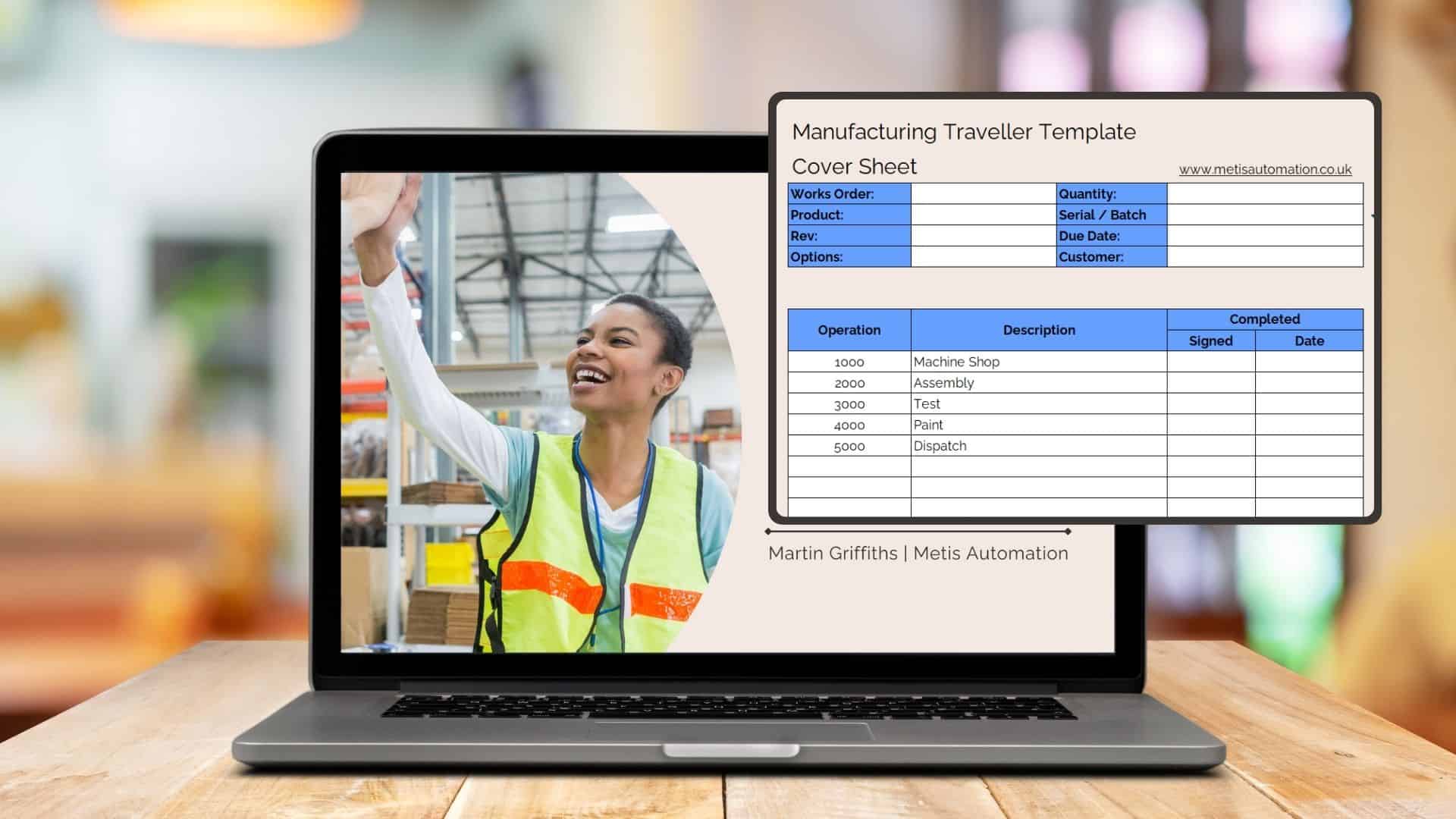Draw. Inspect. Fail. Repeat. There are few things as frustrating in the engineering and development fields as the usually painful and ever-repetitive process of creating drawings from CAD models. That’s where Vin Kettay and Brian Gullette of Vectra Automation are coming in hot. Instead of spending hours draughting, inspecting, and ultimately redoing designs, they’re simplifying the process with the first robotic process automation platform. Now, that previously painful process becomes faster, more accurate, and less likely to result in mistakes in the actual manufacturing process.
So, why does that matter? With their pioneering system, companies and engineers around the world can do their part to cut down on scrap and ramp up productivity to create and deliver the products that could just change the world.
Want to find out more about the wonders of engineering technology right now? Read on!
How did you find out about robotic process automation and what inspired you to create a business around that?
We started on automating the process of engineering drawing generation, well before the term robotic process automation even became popular. So, we started out at Vector as a design services company back in 2005, supporting tier-one suppliers of major automotive OEMs like GM Ford and Chrysler. In terms of supporting our clients, they would do the engineering of 3D CAD models, and then send it over to our team in India who would create the two-dimensional engineering drawings.
It became pretty obvious that it was a very time consuming, error-prone, chaotic process. So, we just decided there had to be a better way. And the obvious way of making a process better is to introduce software to automate the process. We developed new, very sophisticated algorithms and also leveraged existing algorithms used in other domains and other application areas. Our clients were excited about the ability to turn around engineering drawings in one or two days, as opposed to the three to six weeks that it currently took them.
Do you focus on specific verticals?
Firstly, Vinod’s team were developing RPA configurations for body-in-white assembly tooling, for that particular engineering domain. However, the customers also need to make sure that the output is correctly formatted for the end customer. OEMs have their own design standards that the drawings must adhere to as well.
As a result, Vector came up with a way to create autonomous robotic process automation configurations. You can think of them as individual bots. Each bot is trained to recognise the engineering domain that the CAD modelling is designed for. So, for assembly tooling or product design, recognition of the features in that model are all pre-configured. It then generates the drawings accordingly. It also configures to ensure that the output adheres to the design standard of the end customer.
Do you think improving machine efficiencies is another piece of the puzzle for improving productivity?
Yes, it definitely reduces the launch time and the time to market by a quantum of weeks. In terms of actual manufacturing, it reduces the number of headers transmitted from the design process to the manufacture. It also reduces scrap, rework, and the need to get into expedited shipping or expedited installation at the customer facility. There are a lot of benefits.
One other critical component of productivity enhancement that comes from this type of RPA application, is the designers themselves. The 3D CAD engineers are now spending a small fraction of the time that they used to spend inspecting drawings manually, or making sure that the quality control has been adhered to appropriately. Now, the whole engineering team have a significant amount of time to allocate to better design and to do the work that they loved in the first place.
How did you come up with your software ideas?
They were driven by need. When we got into business in 2005, we were growing like so many other companies in the outsourced design space. At that time, our sole value proposition was to lower cost engineering, because our engineering centre is based out of India. But there’s a lot of back and forth that happens in the conventional buying creation process, in terms of chaos errors as well as human error, so it was a painful process.
Everybody in the world accepted it as status quo because nobody knew how to do anything differently. And that’s when I decided that there had to be a better way. With did a lot of research and development, and found there were certain APIs associated with the CAD platforms, that enabled us to automate joins. We went live several years ago. Then following on, we figured out how to make our software three configurable for any kind of engineering domain.
Our plans are to go into aerospace and defence, but we’re not stopping there. With enough training models for our algorithms to automatically examine and detect, we can easily render architectural drawings and plug into something like Revit. When I say it’s essentially a turnkey solution, it really is. You have your CAD platform and you have your engineering domain. We can set up robots to essentially automate that process end to end.
At what point does it make sense to do robotic process automation?
Eventually, I think it makes sense for almost any engineering design task for its mechanical components and systems. This is a mechanical engineering solution for that design scenario, especially if it’s 2D is a bottleneck.
For complex tooling that has thousands of components, each one has a different view angle. Those are the tedious, simple calculations that we can do algorithmically, and that’s where it really makes sense. Why spend all this time and effort, whether it’s outsourced or not, when the amount of work is the real question.
Our plastics components manufacturer get design changes from customers up to the last moment. They have this big 2D bottleneck that they’ve got to finish in the final form. They’d like to be able to test some 2D outputs to go to pre-manufacturing or manufacturing design and have those drawings to work with and redo if there’s a design change at the last minute. So, in that scenario, pressing a button to get the drawings done, error-checking them and releasing the manufacture, is definitely a big game-changer. In that context of time or volume of work, that’s where we come in and can provide significant benefit.
What are your plans for 2022?
I’m most excited to see the amount of engineering capacity that we’re helping to boost with our customers. These are teams that are doing 50,000 to 100,000 hours or more of 2D annually, and we’re building configurations to put all that into automation.
Our existing customers want a configuration built out for SolidWorks and another one built out for Crio. We’ll also have another one built out on AutoCAD for a company that designs plant layouts and plant engineering systems. So our main thrust is that. We’re also going to be bringing on new customers. We spent quite a few years just focusing on a couple of key clients. Now, we’re finally opening up the door to bring on new clients and have quite a few coming on board as we speak. We’re going to be working directly with automotive OEMs and have them introduce Auto 2D, which is our product to their suppliers. That’s the best way for an OEM to gain the benefits.
What’s the best way to get in touch with you or to find out more?
You can use the email vkettay@vectraglobal.com. Or, type in sales@vectraglobal.com and we’ll respond immediately.
Vector are also very open to running full demonstrations of the software using CAD files from customers, provided that it is closely proximal to the configurations we’ve already created. We can typically take an example file and show a potential prospect what it would look like to have that fully automated, and what the required steps are to complete the configuration. It’s very powerful software, that we can set up in a day or so.
Unleash the Power of Digital Manufacturing
Download our free Digital Transformation Starter Kit to set the gold standard for operational clarity and excellence.





